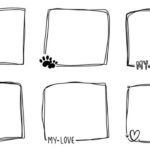I. Understanding Upcycled Products: A Growing Trend in Sustainable Consumerism
II. Demographics of Upcycled Buyers: Who is Leading the Charge?
III. Motivations Behind Purchasing Upcycled Goods: Environmental and Aesthetic Factors
Understanding Upcycled Products: A Growing Trend in Sustainable Consumerism
Have you ever looked at an old item and wondered if it could have a second life? That’s where the magic of upcycling comes in! Upcycled products are more than just trendy; they represent a creative way to embrace sustainability while reducing waste. Let’s dig into this growing trend and see why it’s catching the attention of so many consumers.
What Exactly is Upcycling?
At its core, upcycling is about taking something that might be considered trash and transforming it into something new and valuable. Instead of simply recycling—which often involves breaking materials down and reprocessing them—upcycling gives items a fresh perspective and purpose without the need for extensive processing. Think of it as giving a beloved object a glow-up!
Why is Upcycling Important?
The world is facing significant environmental challenges, and upcycling offers a practical solution to combat waste. Here are a few reasons why this trend is so important:
- Reduces landfill waste: By giving old items a new lease on life, we can help keep them out of overcrowded landfills.
- Conserves resources: Upcycling decreases the demand for new materials, which often require significant resources to produce.
- Promotes creativity: Upcycling encourages innovation and creative thinking, allowing individuals and businesses to express themselves through unique designs.
The Upcycling Process
So how does upcycling actually work? It often involves:
- Finding materials: It starts with sourcing old, discarded items that have potential. This could be anything from vintage furniture to fabric scraps.
- Reimagining the item: The next step is brainstorming how to transform the item. This may involve reupholstering chairs, turning glass bottles into vases, or crafting art from discarded wood.
- Creating a new product: Finally, the magic happens! The old item is transformed into something completely new and functional, often with a story attached.
Where to Find Upcycled Products
Curious about where to get your hands on some fabulous upcycled goods? Here are a few places to explore:
- Local craft fairs: These often showcase talented artisans passionate about sustainability.
- Online marketplaces: Websites like Etsy feature countless sellers who specialize in upcycled products.
- Thrift shops: You never know what treasures you might find that could be transformed with a little creativity!
In Conclusion
Upcycled products represent a beautiful intersection of sustainability, creativity, and individuality. They not only help reduce waste but also give consumers a chance to express their unique style and values. As we become more aware of our environmental impact, embracing upcycled goods is a delightful way to make a positive change while enjoying one-of-a-kind finds. So the next time you spot something old, consider how it could be reimagined. Who knows? It might just become your favorite new piece!
Demographics of Upcycled Buyers: Who is Leading the Charge?
When we think about sustainable consumerism and the growing trend of upcycled products, it’s fascinating to see who is actually driving this movement. Understanding the demographics of upcycled buyers gives us insight into not only who is buying these innovative products, but also why they are making these environmentally conscious choices.
Age Groups Embracing Upcycling
First off, let’s talk age. Upcycled products are finding favor among a diverse age range, but certain groups seem particularly drawn to them:
- Millennials (ages 25-40): This tech-savvy generation is not just interested in trendy items; they want products that tell a story. Upcycled goods resonate with their desire for sustainability and individuality.
- Generation Z (ages 18-24): Known for their strong commitment to environmental issues, Gen Z is fiercely advocating for sustainable practices. They prioritize brands that reflect their values, leading them to favor upcycled options.
- Baby Boomers (ages 57-75): Interestingly, this demographic has also shown a keen interest in upcycled products, especially when they are looking for unique home decor or vintage-style items. Their appreciation for craftsmanship often translates into a love for upcycled goods.
Gender Insights
While both men and women are purchasing upcycled products, research indicates that women tend to lead the charge. This could be attributed to their broader interest in home decor, fashion, and crafting. Women are often the primary decision-makers when it comes to shopping for household items and gifts, making them a pivotal audience for upcycled brands.
Geographic Trends
Geography also plays a significant role in who buys upcycled products. Urban areas, particularly those with a strong creative community like:
- New York City: Home to many artisanal markets.
- Los Angeles: A hub for eco-conscious living.
- Portland: Known for its sustainability initiatives.
These cities have vibrant markets for upcycled goods, showcasing how local culture can influence buying behavior. People in these urban settings often have greater access to sustainable products, making it easier for them to choose upcycled options over conventional items.
The Influence of Social Media
Let’s not forget the role of social media! Platforms like Instagram and Pinterest are rife with visually appealing displays of upcycled goods. Influencers and eco-conscious brands use these channels to promote their creative and sustainable efforts, appealing to a younger audience that values both aesthetics and ethics. This exposure not only increases awareness but also fosters a community of like-minded individuals who are passionate about sustainability.
Final Thoughts
As we explore the demographics of upcycled buyers, it becomes clear that this trend transcends age and gender. It’s a collective movement led by individuals who care about the planet and seek unique products that reflect their values. So, whether you’re a millennial scrolling through Instagram or a boomer visiting a local market, the upcycling trend is accessible and appealing to all. Embrace it, and who knows—you might just find your new favorite item while championing sustainability!
Motivations Behind Purchasing Upcycled Goods: Environmental and Aesthetic Factors
Have you ever found yourself admiring a beautifully crafted piece of furniture made from reclaimed wood or a stylish bag created from discarded materials? If so, you’re not alone! More and more people are drawn to upcycled products, and the reasons behind this growing trend are as diverse as the items themselves. Let’s dive into the motivations that encourage consumers to choose upcycled goods.
1. Environmental Concerns
First and foremost, many buyers are driven by a desire to make environmentally friendly choices. In an age where climate change and pollution dominate the headlines, people are becoming increasingly aware of their impact on the planet. Here’s why upcycled products resonate so strongly with eco-conscious consumers:
- Waste Reduction: Upcycling breathes new life into materials that would otherwise end up in landfills. By choosing these products, consumers feel they are playing a part in reducing waste.
- Resource Conservation: Upcycled goods minimize the need for new raw materials, preserving our natural resources. Every time someone purchases an upcycled item, they are effectively saying “no” to excess manufacturing.
- Carbon Footprint: Many upcycled products have a lower carbon footprint compared to their new counterparts, as they often require less energy to produce. This appeals to buyers who want to lessen their environmental impact.
These eco-friendly motivations go beyond mere trends. They reflect a deeper understanding of the interconnectedness of consumer choices and environmental health.
2. Aesthetic Appeal
While many consumers are motivated by sustainability, let’s not forget the aesthetic allure of upcycled products! Upcycling often leads to unique, one-of-a-kind items that simply can’t be found in conventional stores. Here’s what makes them so appealing:
- Unique Designs: Each upcycled product has its own story, making it distinct from mass-produced items. This individuality is a significant draw for buyers looking to express their personal style.
- Artistic Value: Many upcycled goods are crafted by artisans who pour creativity and passion into their work. Consumers appreciate the artistry involved in transforming old materials into something beautiful and functional.
- Conversation Starters: An upcycled item can spark discussions about sustainability and creativity. Owning such products often allows consumers to share their values and passion for the environment with others.
For many, the blend of aesthetics and sustainability creates a perfect harmony that’s hard to resist.
3. A Sense of Community
Finally, buying upcycled products often connects consumers to a larger community of like-minded individuals. When people support local artisans or small businesses that prioritize sustainability, they feel they’re part of a movement. This sense of community fosters:
- Support for Local Economies: Many upcycled products come from small businesses or local artisans. By choosing these items, consumers are contributing to their local economy.
- Shared Values: Purchasing upcycled goods often aligns with consumers’ values, creating a sense of belonging among those who prioritize sustainability.
In conclusion, the motivations for purchasing upcycled goods are multifaceted. Whether driven by environmental concerns, the quest for unique aesthetics, or the desire to be part of a supportive community, consumers are making choices that not only benefit themselves but also contribute to a healthier planet. So next time you’re out shopping, consider adding an upcycled item to your cart—you might just find something not only beautiful but meaningful!










Comments